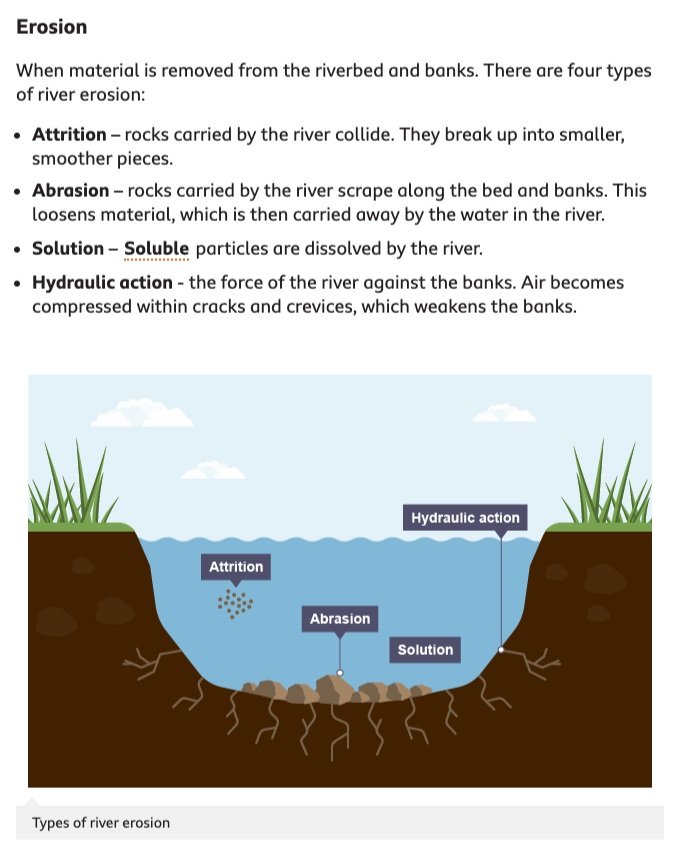A river removes material from the sides (banks) and bottom (bed) of the river channel. This is called erosion.
The boulders, pebbles, sand, silt and mud are carried downstream. This is called transportation. The material being transported is called the load.
When the river loses energy it deposits material on the river bed. The largest material (boulders) are deposited first.
FACTORS AFFECTING EROSION IN RIVERS
TASK 1: Note the 6 factors affecting erosion in rivers.
There are many factors affecting erosion in rivers. These include:
load – the heavier and sharper the load the greater the potential for erosion
velocity and discharge – the greater the velocity and discharge the greater the potential for erosion
gradient – increased gradient increases the rate of erosion
geology – soft, unconsolidated rocks, such as sand and gravel, are easily eroded
pH – rates of solution are increased when the water is more acidic
human impact – deforestation, dams and bridges interfere with the natural flow of a river and frequently end up increasing the rate of erosion.
PROCESSES OF EROSION AND TRANSPORT IN RIVERS
TASK 2: Draw two labelled diagrams explaining the processes of erosion and transportation.
RIVER EROSION PROCESSES
RIVER TRANSPORT PROCESSES





